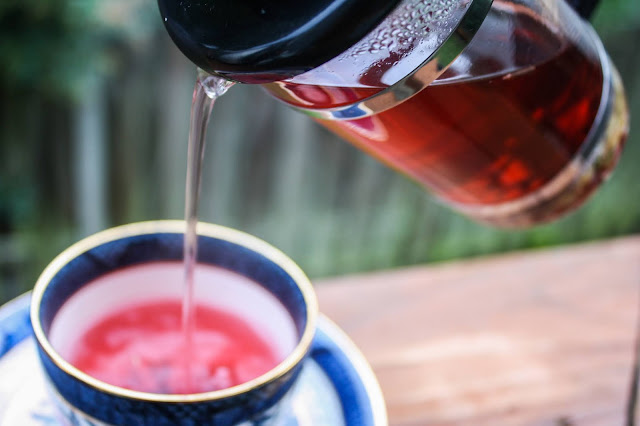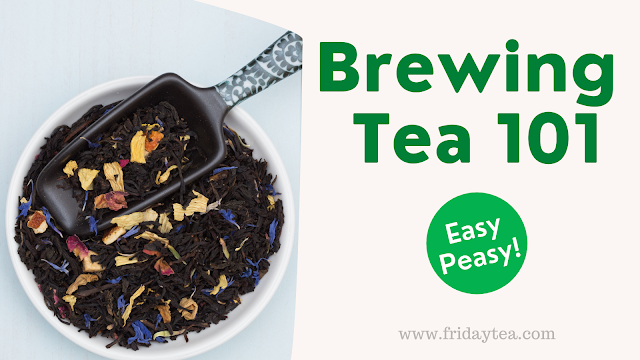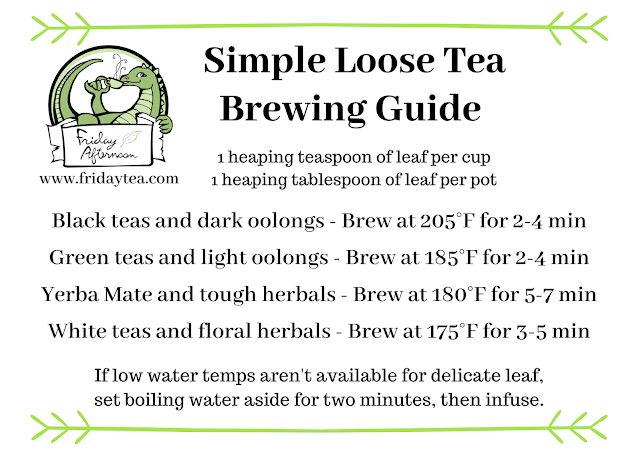The shiny cut jewel that is the tea industry has many many beautiful facets. We see plants as art and have hearts open to the new and unusual. Science and innovation intrigue us and a connection to the earth drives us. We are in a line of passion that naturally lends itself to compassion and hospitality. Overall, tea people are wonderful!
Unfortunately, there are also flaws in the jewel of our community, the most glaring of which is a tendency toward gatekeeping. The art of tea can be intimidating to new explorers, and many shy friendlies have come into our shop sheepishly admitting that they are "bad tea drinkers" or apologizing for not already knowing everything about every way that every tea has ever been brewed. Please allow me to assure you first and foremost:
If you enjoy your tea, you are doing it right.
That being said, allow me to impart what I hope will be valuable guiding points to begin your tea journey. I'll outline here the baby basics (and throw in a few pro tips & tricks) to level up your enjoyment and deepen your relationship with your tea practice.
It all starts with water. The flavor of your tea will be brightened or muddied by the quality of the water you use and anything it contains. Ideally your tea will be brewed in spring water, which contains enough minerals to brighten and highlight the flavor without overwhelming it. Overly hard water will overwhelm your softer flavors, and super soft distilled water will flatten all the complexities, creating a muddy cloudy flavor. Here in Seattle our tap water is pretty good, so that's what I use at home. Of course I could be accessing more notes with bottled spring water, or even by installing a water purifier on my home tap, but to be honest I live in an apartment and I enjoy my tea wonderfully as-is, so I personally don't bother. Play with multiple water sources and approaches to find what works best for your setup and situation. Your tea will not be ruined if you don't have the means or desire to be precious about your water.
Temperature is HUGE for tea. Tea leaves are tender creatures with complex anatomy and chemical composition. The drying, embittering compounds (these are tannins, like you find in red wines) are more quickly and harshly pulled from the leaf at higher temperatures. Think of it as a shock. Bitter notes come out when a leaf is shocked with hot water, whereas the shy sweet notes come out to play in cooler temperatures. If your tea is too bitter for your palate, try dialing down the temp by about five degrees at a time until you love it. If it's too smooth and you want more bite, apply the reverse approach. As a jumping-off point, start with the temperature ranges listed in the chart at the bottom of the page. Just keep in mind that these are recommendations and you now have the know-how to adjust to suit your own taste!
Timing is everything. The longer a leaf steeps, the more compounds have time to extract. Seems pretty self-evident, right? Similar to temperature considerations, the time of extraction will inform the flavor notes that pull from the leaf. Consider the time it takes for the water to permeate the leaf surface, grab the flavors and pull them back out. A longer infusion will pull more levels of flavor, more layers of sweet, bitter, earthy, floral, etc. A brief infusion will pull out only a few layers of flavor at a time. Play around with one long brew (say 5 minutes or so) and compare to the experience of multiple short infusions (try brewing and then decanting in about 1-2 minute increments several times over). I think you'll find it's a wholly different experience.
 |
| French Press infusion of a lovely hibiscus tea |
The size and shape of the leaf matters. When brewing a whole leaf (one that has been picked and left whole, rather than cut), the waxy coating of the tea leaf protects the inner compounds from extracting too quickly in the hot water. Larger whole leaf will usually give more mineral and vegetal notes, whereas smaller whole leaf is generally of a delicate, floral disposition. Whole leaf tea will brew more slowly and pull more complex notes. They tend toward sweeter, smoother flavor and can yield many more infusions than their cut leaf counterparts. Cut leaf will offer up bold, earthy, dry, brash notes right off the bat. They can be infused for a much shorter amount of time to hit the strong notes that make for an ideal cup of milk tea and are favored by those who love a bold cup with some edge to it. There isn't a wrong answer here. As with all other matters in brewing, this is a place to examine your personal preference.
Choose your weapon wisely. Er...I mean brewing vessel. Different ways of brewing must be approached with different attitudes and will yield varied results based on leaf type, ratio of leaf to water, time brewed and so on. The best way to approach choosing a brewing vessel is to consider all the information we've learned so far, examine your own flavor preferences, and then take a look at what different brewing methods have to offer. Some options:
Gaiwan - Designed specifically for a tea that opens up over several lightning rounds of infusion. Try this method for oolongs and puers especially, as those are tea types intentionally created for an evolving profile over many infusions. (check out our YouTube video for an intro to these beautiful brewing vessels!)
French Press - My go-to method, and the way we serve tea in our café. I honestly think this is the easiest intro vessel for new brewers. There's tons of space for the leaf to open up (very important for best flavor balance) and when it's at the desired strength you simply press down the plunger. Want to brew again? Great, just take off the top and pour in more water! Want it stronger? No problem, just pull up the plunger and wait a few more seconds, then press it down again! I stand by a press for any type of tea.
Grandpa Style - This is the cutest name, and really refers to a brew method rather than a specific vessel. Still including it on the list. "Grandpa Style" is an actual industry term that just means throwing your leaf loose directly in the cup you're drinking from. Our house teen (you know them as Teacup on every part of the internet) pretty much lives by Milky Oolong in a big ol mug. They put about a teaspoon of leaf in the bottom and pour water directly on top, refilling throughout the day as they like. This style only really works for teas that won't go bitter on you, so light rolled oolongs and cooked puers are best. That said, if it's a small enough cup and a cool enough water temperature, you can pretty much do any tea this way.
English Style - Like Grandpa Style, but the distinction here is that with English Style brews, you put cut leaf directly into a big teapot and allow it to get bitter. This is for people who like a strong cuppa with lots of fortifying cream and sugar. The nicest thing about English Style brew is that you get to swirl it around the pot as you go and read your tea leaves when you're done!








1 comment
Thanks for the informative post! It would be great to put instructions on your bags for timing and temperature. I’ve been using way too much tea for one cup!